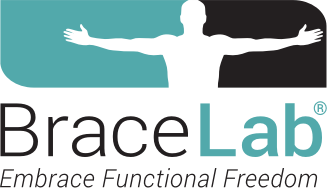What Is Happening When a Patient’s Only Complaint Is Thenar Pain?

November 2022 No. 76
What Is Happening When a Patient’s Only Complaint Is Thenar Pain?
by Judy Colditz OT/L, CHT, FAOTA & Karol Young, OTD, OTR/L, CHT
What We Discovered
Hailey, a 27-year-old who works in marketing, complained of pain over the first metacarpal (palmar side) of her right dominant thumb while holding a hairbrush to blow dry her hair. A thorough examination of her right thumb found significant weakness of the opponens pollicis (OP) muscle. All other examinations were normal except hypertrophy of the adductor pollicis (AP), indicated by the first web space being firmer and thicker than her contralateral first web.
Because the opponens pollicis underlies the abductor pollicis brevis (APB), it is difficult/impossible to palpate the muscle and its function can be confused with the APB, which pulls the thumb away from the palm. The OP is the only muscle that rotates the first metacarpal, so we attached a toothpick parallel to her thumbnails to better appreciate the difference in the thumb rotation of her right versus her left (See Video 1).
Video 1: Difference in left vs. right thumb rotation
What Caused Isolated OP Weakness?
We could not imagine why a relatively young, healthy woman would have isolated OP pollicis weakness and hypertrophy of her adductor. What did she do repetitively that created this imbalance?
As we questioned her further, she stated she also has thumb pain when texting, but she assumed it was a muscle cramp. When Hailey texts (See Video 2), she keeps her thumb flexed and uses her adductor pollicis muscle to bring the side of her thumb tip to the phone keypad. Her posture prevents her from recruiting her OP during texting and places high demand of the AP.
Video 2: Posture preventing OP recruitment
In addition to maintaining an active personal social media presence, part of her work responsibilities involves posting to social media frequently throughout the day. She uses her phone to post both work and personal social media.
How Can We Engage Her Weak OP?
Initially, we focused on exercises to isolate and strengthen the opponens pollicis, but she had difficulty recruiting the OP muscle and fatigued quickly.
Her thumb rotation improved somewhat by using only her right thumb when texting because she had to hold the phone further away from her thumb to reach across the phone (See Video 3). We advised Hailey to post work related social media on her computer rather than her phone to reduce her texting time and to begin massaging and manually stretching her adductor pollicis muscle.
Video 3: One-handed texting
Since Hailey had difficulty both isolating and maintaining use of her OP, we wanted to create a scenario where she could intermittently, yet consistently, use the OP muscle while not allowing the AP to be dominant. With a Push® MetaGrip® orthosis on her thumb (See Video 4), she is unable to adduct her thumb and the opponens pollicis is in the ideal position to participate as she texts!
Video 4: Using the Push® MetaGrip® to prevent AP dominance
What We Learned
• It is crucial to know if the OP is contracting along with the other thenar muscles. Try the toothpicks!
• Certain texting postures can create thenar muscle imbalance.
• In this case, the heavy use of the AP and absence of the OP creates concern for the long-term stability of Hailey’s thumb CMC joint because the opponens pollicis is an important stabilizer and the adductor pollicis is a primary deforming force. It is important for Hailey’s long-term health to establish a new movement pattern of her right thumb when texting.
• The MetaGrip demands a productive movement pattern when texting.
• Frequent repetition over a long period of time is required for the human brain to relearn/remember a movement pattern. What better way than wearing an orthosis that allows only the accurate motion?
• When Hailey can demonstrate sustained thumb rotation during texting without the thumb splint, she can begin slow weaning from the orthosis but must be able to maintain the new posture when she discontinues the orthosis.
• A weak muscle can be painful.
• Hailey’s pain was directly over the OP muscle which occurred primarily when she was holding a hairbrush to blow dry her hair. Our theory is that this activity demanded use of her opponens pollicis muscle and fatigue created the burning pain.
In addition to Trigger Thumb, DeQuervain’s tendonitis, and CMC joint arthritis being in the new diagnostic category of “Texter’s Thumb,” there may be causes of pain related to texting which are not so obvious. Patients who present with isolated thumb pain of unknown origin may have a “Texter’s Thumb” caused by inadequate recruitment of the opponens pollicis and overload of the adductor pollicis. We would love to see research determine how widespread isolated weakness of the OP appears in those who frequently text.
© BraceLab; 2022 all rights reserved
Disclaimer: BraceLab Clinical Pearls are intended to be an informal sharing of practical clinical ideas; not formal evidence-based conclusions of fact.
